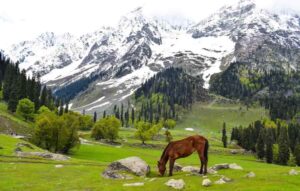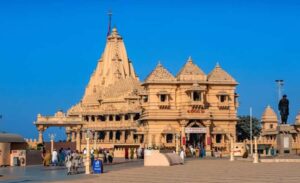History of Joshimath
Nestled in the lap of the majestic Himalayas, Joshimath is a town with a rich history that dates back centuries. Located in the Chamoli district of Uttarakhand, India, Joshimath serves as an important pilgrimage site and a gateway to several religious and tourist destinations in the region. As we embark on a historical exploration of Joshimath, we will unravel the layers of its past, from its early days as a religious center to its significance in the present day.

Ancient Roots
The history of Joshimath can be traced back to ancient times when it was known as ‘Jyotirmath.’ The town’s name is derived from two Sanskrit words: ‘Jyoti,’ meaning light, and ‘Math,’ meaning place of worship. Legend has it that Adi Shankaracharya, the renowned 8th-century philosopher and theologian, established one of his four mathas (monastic institutions) in Joshimath. This matha, known as the Jyotir Math, played a pivotal role in the propagation of Advaita Vedanta, a school of Hindu philosophy.
The establishment of the Jyotir Math elevated Joshimath’s status as a spiritual hub, attracting scholars, ascetics, and devotees from far and wide. The town became a center for learning, discourse, and religious practices, fostering an environment conducive to the exchange of ideas and the preservation of ancient knowledge.
Medieval Period
As the centuries passed, Joshimath continued to flourish as a religious and cultural center. The medieval period witnessed the town’s resilience amid changing dynasties and regional powers. It served as a vital link in the pilgrimage route to Badrinath, one of the holiest shrines in Hinduism, further solidifying its importance in the religious landscape.
During this time, the region around Joshimath saw the construction of numerous temples, some of which stand as architectural marvels to this day. The intricate carvings and ancient sculptures narrate stories of devotion and artistic excellence, providing a glimpse into the cultural tapestry of the region during the medieval era.
Colonial Influence
The arrival of the British in India had a profound impact on the Himalayan region, and Joshimath was no exception. The British recognized the strategic significance of the area and its potential for trade routes and military access. The construction of the Rishikesh-Joshimath road in the 19th century marked a turning point in the accessibility of the region.
The colonial influence also brought about changes in administrative and governance structures. Joshimath became a focal point for the British administration in their efforts to establish control over the remote Himalayan territories. Despite these changes, the town managed to retain its cultural and religious identity, with the local population continuing their age-old traditions.
Modern Era
In the post-independence era, Joshimath has evolved into a modern town while retaining its deep-rooted cultural and spiritual essence. The town has become a base for trekkers and adventure enthusiasts exploring the Garhwal Himalayas. The Auli Ski Resort, located near Joshimath, has gained popularity as a winter sports destination, attracting visitors from across the globe.
The Jyotir Math, with its lineage of spiritual leaders, continues to be a center for spiritual practices and philosophical discourses. Pilgrims heading to Badrinath still pass through Joshimath, reaffirming its role as a crucial stop on the sacred journey.
Natural Challenges and Resilience
Joshimath, like many Himalayan towns, faces challenges posed by its geographical location. The region is prone to natural disasters such as landslides and earthquakes. Despite these challenges, the people of Joshimath have shown remarkable resilience and adaptability. Efforts to strengthen infrastructure, disaster management, and sustainable development are ongoing to ensure the town’s sustainability in the face of environmental uncertainties.
Conclusion
In conclusion, the history of Joshimath is a fascinating journey through time, reflecting the convergence of spirituality, culture, and resilience. From its ancient roots as a center of learning and worship to its role as a modern gateway to the Himalayas, Joshimath has stood witness to the ebb and flow of civilizations. As we marvel at the town’s historical tapestry, we gain a deeper appreciation for the enduring spirit that has shaped Joshimath into the unique and vibrant place it is today.
Also Read







